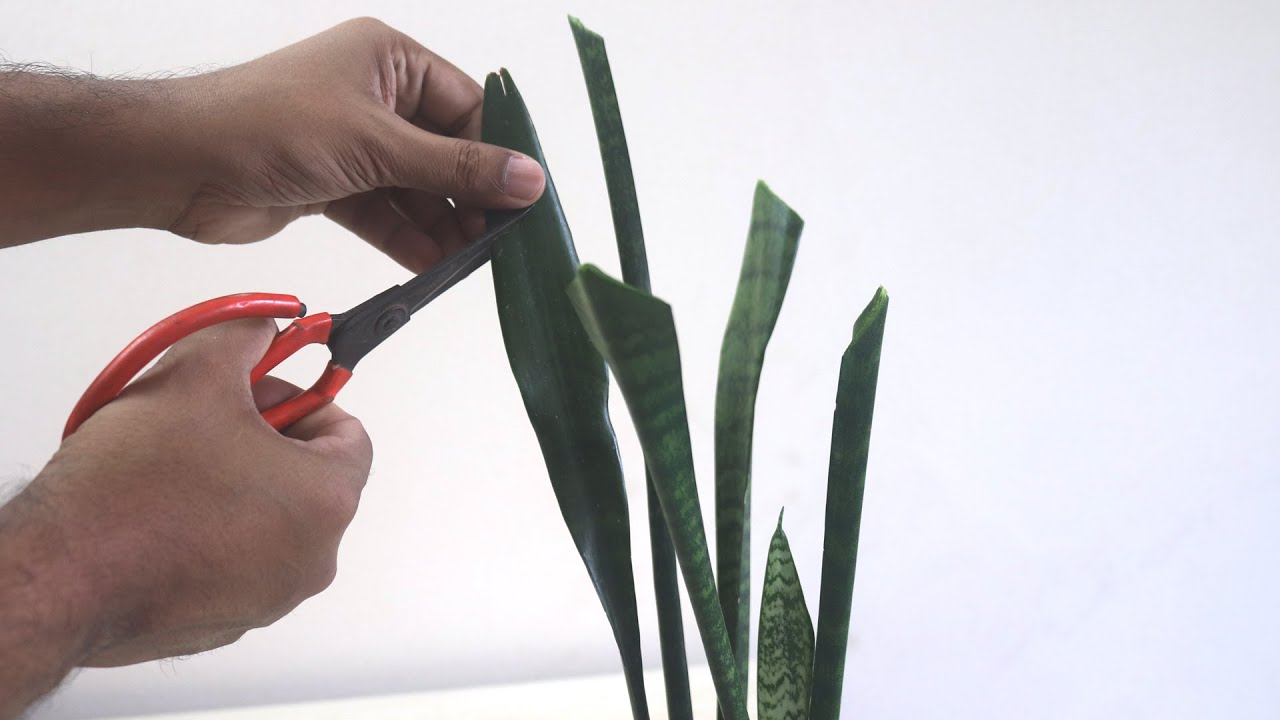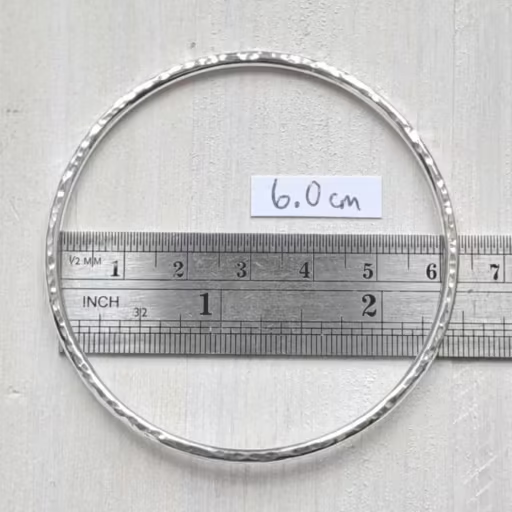Learning to prune your snake plant is a key skill that every owner should master. Snake plants (Sanseveria) have gained huge popularity because they’re easy to grow and need minimal care to thrive. These hardy and adaptable plants need occasional trimming to keep them looking their best and support healthy growth, even though they mostly take care of themselves.
Proper snake plant care means knowing the right time and method to trim this adaptable houseplant. These remarkable plants come in dozens of varieties with rigid sword-like leaves that show beautiful bands of green, yellow, and cream. They can grow up to 6 feet tall inside your home and reach impressive heights of 12 feet in ideal conditions. Your snake plant’s benefits go beyond just looks – it purifies the air and helps you get better sleep. The plant’s beauty can suffer if you skip pruning, which leads to unattractive leaves. Regular trimming removes damaged leaves and stimulates fresh growth, especially during spring or early summer when the plant grows most actively.
This piece covers everything you should know about pruning your snake plant the right way. You’ll learn to spot signs that your plant needs trimming, follow simple step-by-step instructions, and understand the post-pruning care that helps your plant bounce back in 2-4 weeks.

Table of Contents
Why and When to Prune a Snake Plant
Snake plants (also known as mother in law’s tongue) are famous for being low-maintenance, but regular pruning plays a key role in their health and appearance. You need to understand why and when to prune these tough houseplants to keep them vibrant and attractive for years.
Aesthetic and health reasons for pruning
Snake plants get several important benefits from pruning. We trimmed them to maintain their shape and stop them from becoming unruly or leggy as they grow. These plants can grow several feet tall indoors, so smart pruning keeps them compact and better suited for their space.
Pruning does more than improve looks – it helps plants grow healthier. The plant redirects energy to produce fresh, new foliage when you remove old or damaged leaves. This energy shift triggers new growth that results in a fuller, more vibrant plant over time.
Disease prevention is another key benefit. Quick removal of infected parts stops problems from spreading through the whole plant. The plant also saves valuable resources when you remove damaged or dying leaves.
Proper pruning helps the plant clean air better by keeping the foliage healthy. This makes pruning extra valuable if you keep snake plants to improve air quality.
Best time of year to prune
The timing of snake plant pruning matters by a lot. The best time to prune is during active growth in spring or early summer. Plants heal faster and grow new leaves when cut during these seasons.
You should avoid pruning in winter. Snake plants go dormant in cold months, and trimming then causes extra stress. Plants need more time to heal during rest periods, which can lead to slow recovery or other issues.
In spite of that, you can remove damaged, dead, or diseased leaves any time of year to keep plants healthy. These emergency cuts are different from regular pruning because problem leaves need quick removal whatever the season.
Signs your snake plant needs trimming
Your snake plant will show clear signs when it needs pruning. Watch for these signals to act before problems get worse:
- Yellowing leaves: Often suggesting overwatering or nutrient deficiencies, yellow leaves should come off
- Brown tips or edges: This damage won’t heal
- Wilting or drooping: Shows the leaf struggles and might need removal
- Visible damage or disease: Spots, discoloration, or physical damage need quick action
- Excessive height or leaning: You can trim tall leaves at soil level if they spill out or lean
- Unbalanced appearance: One leaf might grow much higher than others, creating odd shapes
The technique itself matters as much as knowing when and why to prune. These snake plant care basics will give you the tools to keep a healthy, attractive plant that makes your space better while staying easy to maintain.

Essential Tools and Preparation
The life-blood of successful snake plant pruning lies in proper preparation. A plant enthusiast should approach snake plant pruning just like a surgeon with sterilized instruments. The right tools and precautions will help you make clean cuts that help your mother in law’s tongue plant heal faster with minimal stress.
Pruning shears vs scissors
You have two main options to consider at the time you choose a cutting tool for snake plant care: pruning shears or scissors. Each option works best for specific trimming tasks.
Pruning shears give you the best results for most snake plant trimming needs. Their design creates cleaner cuts and minimizes tissue crushing, so your plant recovers quickly. These specialized tools give you the power you need to make precise cuts on thick, mature leaves or stems without damaging nearby tissue. Serious plant enthusiasts will find high-quality pruning shears worth the investment since they stay sharp longer.
Scissors are enough for smaller trimming tasks. You can use regular household scissors to remove thin leaves or trim brown leaf tips. They are more available and budget-friendly, but scissors might crush plant tissues more than pruning shears and slow down healing. You should save scissors for minor maintenance instead of major pruning work.
Sharp tools are crucial whatever tool you choose. Dull edges tear instead of slice and create jagged wounds that heal slowly and risk infection.
Sterilizing your tools
Learning to care for snake plant means knowing how to sanitize your pruning equipment. Pathogens can spread between plants through dirty tools and infect your healthy specimens.
You should disinfect your tools before making any cuts using these proven methods:
- Isopropyl alcohol (70-100%) – This works best for sanitizing pruning tools. You can wipe, spray, or dip your tools in alcohol to kill most pathogens immediately. You don’t need to soak or rinse.
- Bleach solution (10%) – Mix 9 parts water with 1 part bleach. Let blades soak for at least 10 minutes, then rinse well with clean water to stop corrosion.
- Rubbing alcohol – Most drug stores sell this ready-to-use solution that works well with a simple wipe-down.
These methods work better against plant pathogens than household cleaners like Lysol or Pine-Sol. Alcohol-based sanitizers also won’t corrode your tools like bleach or TSP cleaners.
Wearing gloves for safety
Safe snake plant care includes protecting your hands during pruning. Snake plants have mildly toxic compounds in their sap that might irritate your skin. Lightweight gardening gloves protect you while letting you work with precision.
Gloves become really important during long pruning sessions that expose you to plant sap repeatedly. You should protect yourself consistently even if you haven’t had reactions before to prevent developing sensitivity over time.
The foundations of effective snake plant pruning start with choosing the right tools, keeping them clean, and staying safe. These first steps protect both your plant from infections and your skin from irritation. Your snake plant pruning project will go smoothly from start to finish with proper preparation.
How to Prune Snake Plant Leaves Step-by-Step
The right way to prune a snake plant turns a basic maintenance task into a chance for renewal. Unlike many houseplants, the mother in law’s tongue needs specific cutting methods to keep its striking architectural form and promote healthy growth. These step-by-step instructions will give you the best results.
Inspect and identify leaves to cut
Take a good look at your snake plant to spot leaves that need removal. Look for:
- Yellowing or browning leaves that indicate disease or damage
- Wilted or drooping leaves that have lost their strength
- Leaves with visible damage, brown tips, or disease spots
- Overgrown or outward-facing leaves that throw off the plant’s balanced look
Look at your plant from every angle since some problems show up only from certain viewpoints. Leaves that feel soft or squishy at the base are already dying and need quick removal.
Cutting at the base or mid-leaf
After you spot leaves to remove, your cutting technique is vital. For most pruning needs:
- Hold the leaf you want to cut at its tip and gently pull up to see the base
- Make a clean, straight cut at soil level with your sterilized tools
- Cut as close to the soil as you can for full removal
You can cut mid-leaf to fix brown tips or partial damage. Make your cut at a slight angle that matches the natural leaf tip, leaving a tiny brown edge to protect healthy tissue.
To propagate new plants, cut leaves diagonally instead of straight across – this helps with rooting. For propagation sections, aim for 3-4 inch pieces with the bottom cut upward into a triangle shape.
How to avoid over-pruning
Too much pruning can stress your snake plant and slow its growth. To keep things balanced:
Limit removal to one-third of the plant in any single pruning session. This leaves enough foliage for the plant to make food and recover.
Keep several inches of each leaf intact when trimming since completely removed leaves can’t help feed the plant. Note that snake plants grow new leaves only from the base and rhizomes – cut leaves won’t regrow.
The best time to prune is during the growing season (spring and summer), not during winter when the plant is dormant. This timing helps quick recovery and new growth.
Disposing or saving cuttings
After pruning, you have two main options for your trimmed leaves:
- Disposal: Healthy cuttings can go in your compost or green waste bin. Put diseased leaves in the trash to avoid spreading problems.
- Propagation: Keep healthy cuttings to grow new plants. You can root these in water or soil – perfect for growing your collection or sharing with friends.
Small, regular trims work better than big pruning sessions. With steady care, your snake plant will keep its striking looks and produce fresh, vibrant growth.
Post-Pruning Care for Snake Plants
Your snake plant (Sansevieria) needs proper aftercare to recover and stay healthy after pruning. The way your mother in law’s tongue bounces back from trimming depends on how you care for it in the next few weeks.
Watering after pruning
Don’t rush to water your snake plant right after pruning. Let the fresh cuts heal first to avoid infections. The soil should dry out a bit between waterings to keep root rot away. Your snake plant won’t need much water during recovery. This careful approach to moisture helps the plant heal and prevents overwatering – a common issue these plants face.
Sunlight and placement tips
The right location helps your pruned snake plant recover faster. Find a spot with bright, indirect sunlight. Snake plants can handle low light conditions, but they’ll bounce back quicker and grow stronger with enough filtered light. Keep your pruned plant away from direct sun since this extra stress slows down healing. Good light exposure plays a vital role throughout the healing process.
When to resume fertilizing
Skip fertilizing right after pruning. Wait until you see new growth at the plant’s base. You can start using a balanced houseplant fertilizer about 4-6 weeks after pruning. Note that snake plants need a break from fertilizer during their winter rest period from late October through February. The plant uses nutrients best during its active growing season.
How long recovery takes
Your pruned snake plant’s recovery time depends on several things. Most plants fully recover in 4 to 6 weeks. Plants with just a few trimmed leaves might bounce back in 3 to 4 weeks. Major pruning needs more time – 6 weeks or longer. New shoots or leaves growing from the base show your plant is healing well. The speed of recovery depends on temperature, light exposure, and your watering routine.
Using Pruned Leaves for Propagation
Your pruned snake plant leaves are a great way to expand your plant collection without spending money. Learning these propagation techniques can change your snake plant care into an exciting growth journey.
Water propagation method
Water propagation is one of the easiest ways to multiply your mother in law’s tongue. Start by cutting a healthy leaf near the soil line with sterilized tools. Put the bottom quarter of the cutting in a clear glass container with clean water. The container should sit in bright, indirect sunlight to help roots grow.
This method has two big advantages: it’s simple and you can watch the fascinating root growth. Yes, it is easy to see when your cutting needs transplanting—usually when roots are about 1-2 inches long. The water needs weekly changes to stop bacteria and algae from growing.
Soil propagation method
Soil propagation starts with cutting a healthy leaf at the soil line and letting it callus for a few days. The callus creates a shield against bacteria. After callusing, plant the cutting about half an inch deep in well-draining succulent or cactus soil.
You can boost your plant count by cutting the leaf into 2-4 inch sections. Just mark which end goes down—roots only grow from the bottom part. Many plant lovers cut an inverted V-shape at the bottom to give roots more space to develop.
Tips for successful rooting
The quickest way to succeed with either method:
- Give bright, indirect light—snake plants need good light but direct sun can harm cuttings
- Be patient—roots usually take 6-8 weeks to develop
- Keep moisture right—don’t overwater, water soil propagations only when top 1-2 inches feel dry
- Use pots with drainage holes to prevent root rot
- The best temperature range is between 70-90°F
Slow-growing plants might need better light or adjusted moisture. Leaf cuttings from variegated varieties might turn solid green, so division works better to keep the patterns.
Summing all up
Snake plant pruning might seem scary at first, but this piece will help you become skilled at keeping these tough houseplants healthy. Regular trimming keeps their striking looks and helps them grow better throughout their life. The timing affects results by a lot – spring and early summer work best for trimming. You should avoid winter pruning unless you need to remove damaged leaves.
Without doubt, the right tools make all the difference. Clean cuts from sharp, sterilized pruning shears help the plant heal faster and reduce stress. On top of that, gloves protect your hands from the snake plant’s sap that might irritate your skin.
Your plant needs 4-6 weeks to heal, depending on how much you’ve pruned. The plant needs less water during recovery, along with bright indirect light. Skip fertilizer until new growth appears. Once fresh leaves pop up from the base, you can go back to your usual care routine.
The trimmed leaves are a great way to get more plants through propagation. Each cut section could become a new plant when you use either water or soil methods. This lets you grow your snake plant collection without spending extra money.
Snake plants rank among the most forgiving houseplants accessible to more people. They handle some neglect while cleaning your air and beautifying your space. These pruning skills will help your snake plant thrive for years, keeping its stunning shape and making your home healthier.
Here are some FAQs about how to prune snake plant:
Are you supposed to trim snake plants?
You can trim snake plants to maintain their shape or remove damaged leaves, though they typically require minimal pruning. Learning how to prune snake plant leaves properly helps keep the plant healthy and attractive. While not necessary for survival, occasional pruning is part of standard snake plant care.
Where do you cut a snake plant?
When learning how to prune a snake plant, always cut leaves at the soil line using clean, sharp shears. For partial leaf trimming in how to prune snake plant leaf situations, make straight cuts across the leaf just above any damaged areas. Many how to prune a snake plant video tutorials demonstrate proper cutting techniques visually.
Can I cut the flower off my snake plant?
Yes, you can remove snake plant flowers by following standard how to prune snake plant methods at the base of the flower stalk. While the fragrant blooms are harmless, some prefer removing them as they can be messy when they fade. The same principles in how to prune a snake plant video guides apply to flower removal.
What to do when a snake plant is too tall?
For tall snake plants, use standard how to prune snake plant techniques to cut leaves at your desired height. You can propagate the cut portions following methods shown in how to prune a snake plant video tutorials. Alternatively, consider dividing the plant at the roots if height reduction is needed long-term.
How to rejuvenate a snake plant?
Rejuvenation involves how to prune snake plant leaves that are damaged or overgrown, plus possible repotting. Remove older outer leaves at the base when practicing how to prune a snake plant for renewal. Division of crowded plants often works better than pruning alone for complete rejuvenation.
Why is my snake plant growing tall and skinny?
Tall, skinny growth typically indicates insufficient light, causing the plant to stretch unnaturally. While learning how to prune snake plant leaves can address the symptoms, moving it to brighter light solves the underlying issue. The same techniques in how to prune a snake plant video guides apply to trimming leggy growth.

